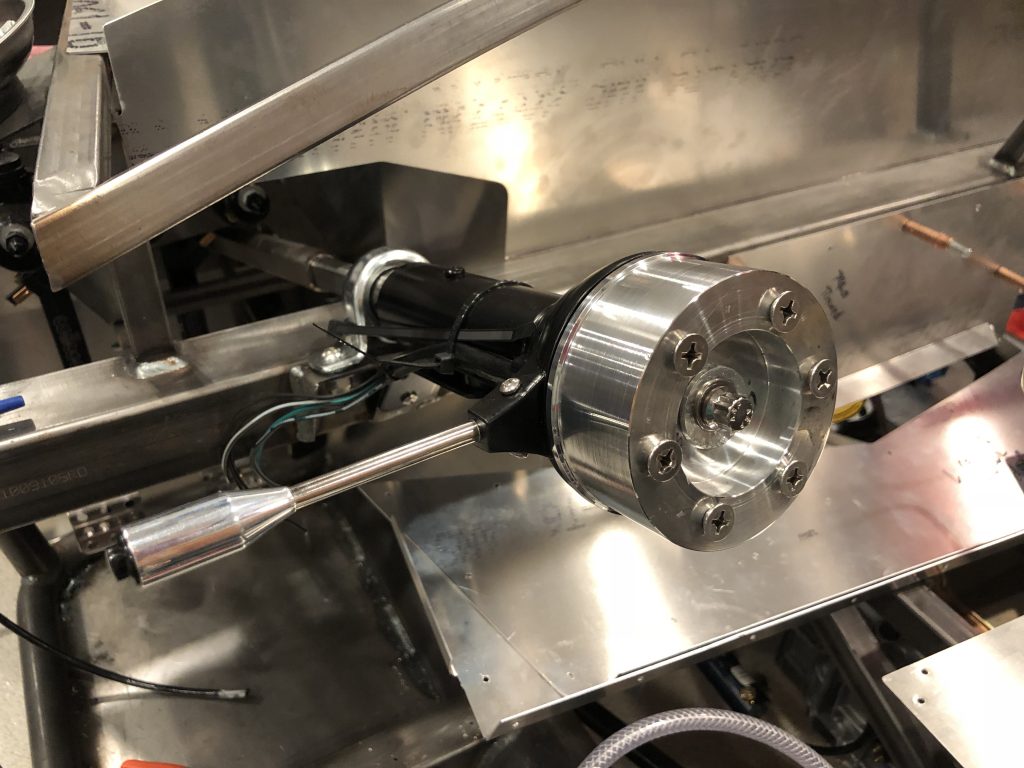The upper steering shaft has two flat sides that can only fit into the steering wheel hub two ways, but the steering wheel can install in six different positions. Normally it’s not particularly important how the upper steering shaft is oriented since any misalignment of the steering wheel can easily be adjusted at the tie-rod end during wheel alignment.We’re using
We’re using Russ Thompson’s Turn Signal System which requires machining the hub so that it has protrusions to trip the self-canceling feature of the steering column. This means that the upper steering shaft’s two flat sides need to be oriented vertically when the steering rack is centered. Just my luck that it was oriented exactly 90º out from that. While I might have been able to adjust the tie rods enough to center the steering wheel, I really didn’t want the tie rods adjustment to be that uneven between sides.
Instead, I loosened all of the splined joints and bearings on the steering shaft enough that I could uncouple the upper spline joint (just forward of the driver side foot box) and rotated the upper steering shaft 90º. I then tightened everything back down and installed the steering wheel hub. I fully seated it on the shaft by using the center bolt to draw it down and then tapped the shaft in until the gap between the steering hub and steering column was about 1/8″. Finally, I verified that the self-canceling feature works as expected. All I need to do now is install the steering wheel and the steering system will be complete. I’m going to hold off on installing the steering wheel for a while though to avoid scratching it.

